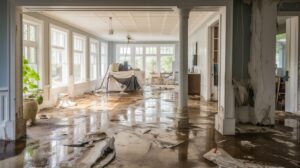
Office renovation in Singapore transforms more than corporate aesthetics—it reshapes the daily rhythms, aspirations, and quiet struggles of thousands of workers whose lives unfold within these redesigned spaces. Behind the gleaming glass facades of Raffles Place and the bustling corridors of Marina Bay, each renovation project tells intimate stories of ambition and anxiety, of workers adapting to spaces that promise collaboration but often deliver isolation, of families whose breadwinners navigate increasingly complex workplace environments that blur the boundaries between professional efficiency and personal wellbeing.
These renovations aren’t abstract business decisions. They’re interventions in human lives, altering the physical and psychological landscapes where Singapore’s workforce spends the majority of their waking hours.
The Morning Migration
At 7:30 AM, Priya steps into the newly renovated twenty-third floor of a Shenton Way office tower. After eighteen months of remote work, the space feels foreign. The hot-desking system means no permanent workspace. Personal photographs that once anchored her workday now live in a locker, visited only during breaks.
Her experience reflects broader patterns across Singapore’s corporate landscape:
• Workers report increased stress navigating unfamiliar environments daily
• Productivity decreases during adjustment periods following renovation
• Social connections weaken when colleagues no longer sit in predictable locations
• Mental health concerns rise as workers lose environmental stability
The Architecture of Anxiety
The psychological impact of office renovation extends beyond aesthetics. Dr. Sarah Lim, an occupational psychologist who has studied workplace transitions across Singapore’s major corporations, observes: “We’re seeing increased workplace anxiety directly correlated with major office renovations. Workers lose their sense of place, their environmental anchors.”
Marcus, a graphic designer whose creative process depends on consistent environmental conditions, was relocated three times during a six-month renovation. Each move required adapting to different lighting and noise levels. His creative output declined, but company metrics focused on space utilisation rather than individual productivity.
The Families Behind the Facades
Office renovation ripples into family homes across Singapore’s residential estates. When Raj’s firm embraced “activity-based working,” his schedule became unpredictable. Some days he finished early due to efficient space utilisation; other days he stayed late struggling with unfamiliar technology systems. His wife arranged flexible childcare coverage, never knowing when he might return home. His elderly parents, accustomed to regular evening calls, reached voicemail more often. His teenage son’s homework routine suffered during increasingly frequent late nights.
The renovation promised better work-life balance, but Raj’s family experienced increased uncertainty. His story illustrates how workplace changes penetrate domestic spaces in ways corporate planners rarely consider.
The Service Workers in the Shadows
Perhaps no group experiences office renovation more intimately than the cleaning staff, security guards, and maintenance workers who keep these spaces functional. Fatimah has worked the night shift cleaning offices in Singapore’s financial district for twelve years. She has witnessed dozens of renovations, each one altering her work patterns and physical demands.
“Every renovation makes the job different,” she explains during a brief break between floors. “New furniture means learning new cleaning techniques. Smart building systems mean new security protocols. Open offices create more dust because of all the movement. The work gets harder, but the pay stays the same.”
Her observations reveal hidden dimensions of office renovation across Singapore’s commercial sector:
• Maintenance staff bear physical costs of adapting to new building systems
• Cleaning protocols become more complex with new materials and technologies
• Security procedures multiply with advanced access control systems
• Night shift workers face disrupted routines during lengthy renovation processes
• Service workers’ expertise goes unrecognised in renovation planning processes
The Environmental Toll of Constant Change
The environmental impact of Singapore’s office renovation boom extends beyond energy efficiency metrics to encompass broader questions of sustainability and waste. When corporations renovate offices every five to seven years—increasingly common in Singapore’s competitive commercial property market—the cumulative environmental cost becomes substantial.
Construction waste from office renovation includes furniture with remaining useful life, electronic equipment requiring specialised disposal, and flooring materials containing synthetic compounds.
Maria, an environmental consultant, notes the contradiction: “Companies invest in green certifications whilst generating enormous waste from perfectly functional materials. The environmental cost of constant renovation often exceeds energy-efficient benefits.”
The Promise and Peril of Workplace Transformation
Office renovation in Singapore represents both tremendous opportunity and significant risk for the workers whose lives unfold within these transformed spaces. When approached thoughtfully, with genuine consideration for human needs and environmental impact, renovations can create healthier, more productive, and more equitable work environments that support both individual wellbeing and organisational success.
But when driven solely by operational metrics or aesthetic trends, these projects can impose significant costs on workers, families, and communities whose voices rarely influence renovation decisions. The challenge lies in ensuring that the human stories behind Singapore’s office renovation boom receive the same attention as the architectural and financial considerations that typically drive these transformative projects.
The future of Singapore’s workplaces depends on recognising that every renovation decision affects real people with complex lives, authentic needs, and legitimate concerns about how their work environments shape their daily experiences and long-term wellbeing—making thoughtful, inclusive planning essential for successful office renovation in Singapore.







